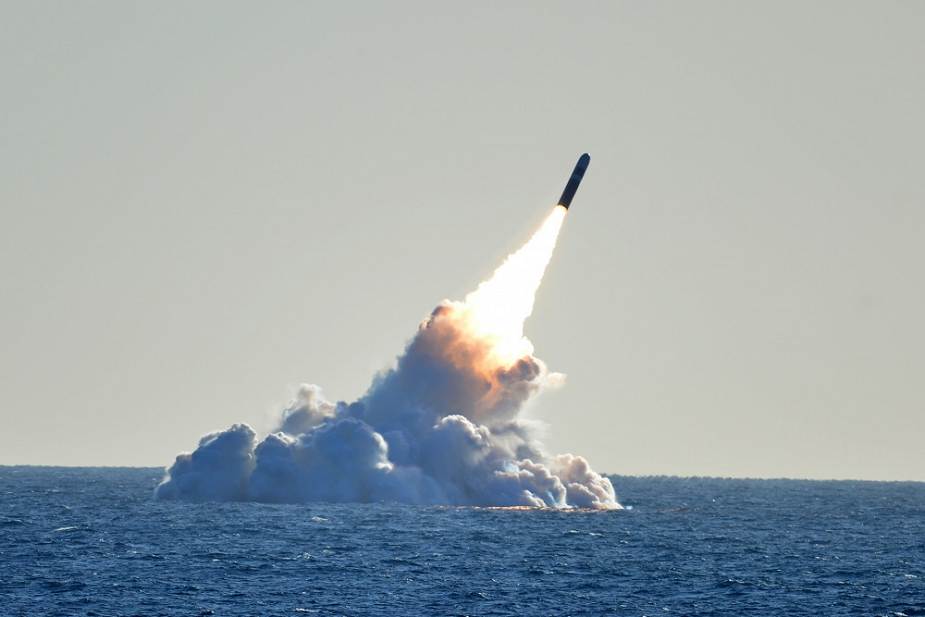Breaking news
Lockheed Martin is awarded a contract to produce Trident II D5 submarine-launched ballistic missile.
According to a contract released by the U.S. Department of Defense (DoD) on November 23, 2020, Lockheed Martin Space, Titusville, Florida, is awarded a $108,778,290 cost-plus-incentive-fee and cost-plus-fixed-fee modification (P00002) to exercise options under previously awarded contract N00030-20-C-0100 for Trident II (D5) submarine-launched ballistic missile production and deployed systems support.
Follow Navy Recognition on Google News at this link
 An unarmed Trident II D5 missile launches from the Ohio-class ballistic missile submarine USS Nebraska (SSBN 739) off the coast of California. (Picture source U.S. Navy)
An unarmed Trident II D5 missile launches from the Ohio-class ballistic missile submarine USS Nebraska (SSBN 739) off the coast of California. (Picture source U.S. Navy)
The Trident II D5 is the latest generation of the U.S. Navy's submarine-launched fleet ballistic missiles, following the highly successful Polaris, Poseidon, and Trident I C4 programs. First deployed in 1990, the Trident II D5 missile is currently aboard OHIO-class and British VANGUARD-class submarines.
The TRIDENT II (D5) Sea-Launched Ballistic Missile UGM 133A (TRIDENT II (D5) missile) developed an improved Submarine Launched Ballistic Missile with greater accuracy and payload capability at equivalent ranges as compared to the TRIDENT I (C4) system.
TRIDENT II (D5) enhances the United States (US) strategic deterrence by providing a survivable sea-based system capable of engaging the full spectrum of potential targets. It enhances the US position in strategic arms negotiation by providing a weapon system with performance and payload flexibility that accommodates various treaty initiatives. The TRIDENT II (D5) missile's increased payload allows the deterrent mission to be achieved with fewer submarines.
The Trident II is a three-stage rocket, each stage containing a solid-fuel rocket motor. The first motor is made by Northrop Grumman. This first stage incorporates a solid propellant motor, parts to ensure the first-stage ignition, and a thrust vector control (TVC) system. The first-stage section, compared to the Trident C-4, is slightly larger, allowing increased range and a larger payload. In addition to a larger motor, the D-5 uses an advanced and lighter fuel binder (polyethylene glycol) than the C-4.
The Trident II D5 payload carries a Post-Boost Vehicle (PBV) which can carry up to 12 Reentry Vehicles (RVs), though New START limits the number to eight. These RVs can be either the Mk 4 with a W76 100 kT yield warhead or the Mk 5, which has a W88 475 kT yield warhead. It is the first U.S. submarine-based missile to have a capability against hardened targets The missile has a maximum range of 12,000 km. The Trident II D5 was first deployed in 1990 and is scheduled to remain in service until at least 2027.


























